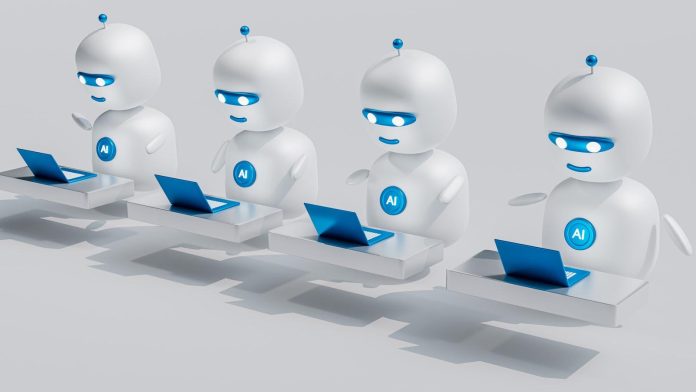The Rise of AI Watermarking in Identifying AI-Generated Content
The utilization of artificial intelligence in generating text has become increasingly prevalent in today’s digital landscape. As a result, the need for reliable methods to distinguish between human-written and AI-generated content has also grown. One innovative solution that has emerged is the use of watermarks embedded within AI-generated text.
The Role of Watermarking Algorithms in Identifying AI-Generated Text
AI language models, such as ChatGPT, operate by predicting the most likely next word to follow a given prompt, generating text one word at a time. Watermarking algorithms then randomly divide the model’s vocabulary into two lists: a “greenlist” and a “redlist.” By prompting the model to select words primarily from the greenlist, a distinct signature is created that allows for the identification of AI-generated text. This method leverages the inherent differences in word usage patterns between human and AI-generated content.
The Initial Success and Promises of Watermarking Technology
Initial studies of watermarking algorithms have shown promise in effectively distinguishing between human and AI-generated text. Researchers successfully identified AI-generated content using algorithms designed to detect watermarks, prompting interest and investment in further development. Major AI companies, including OpenAI, Alphabet, and Meta Platforms, have voluntarily committed to using watermarking to authenticate AI-generated content as a result of these promising initial findings.
The Regulatory Implications of AI Watermarking
White House executive orders and the European Union’s AI Act have called for the use of AI watermarking to establish the authenticity and provenance of digital content. However, recent studies have highlighted potential vulnerabilities in watermarking technology, raising concerns about its reliability in identifying AI-generated text accurately.
The Challenges and Future of AI Transparency Tools
While watermarking remains a promising method for identifying AI-generated content, challenges persist, particularly in addressing vulnerabilities that could be exploited by bad actors. As the development of AI transparency tools continues, collaboration between tech giants, regulators, and researchers will be crucial in refining these mechanisms to safeguard the integrity of digital communication.
Conclusion
In conclusion, the evolution of AI watermarking in identifying AI-generated content reflects the ongoing efforts to ensure the authenticity and trustworthiness of digital communication. While challenges exist, the commitment to innovation, collaboration, and rigorous scrutiny is essential in fostering a digital future that values both human and machine-generated content. By refining AI transparency tools like watermarking, we can enhance the utility of AI while preserving the foundational trust in digital content that our society relies upon.
IntelliPrompt curated this article: Read the full story at the original source by clicking here a fun game: sprunki horror

